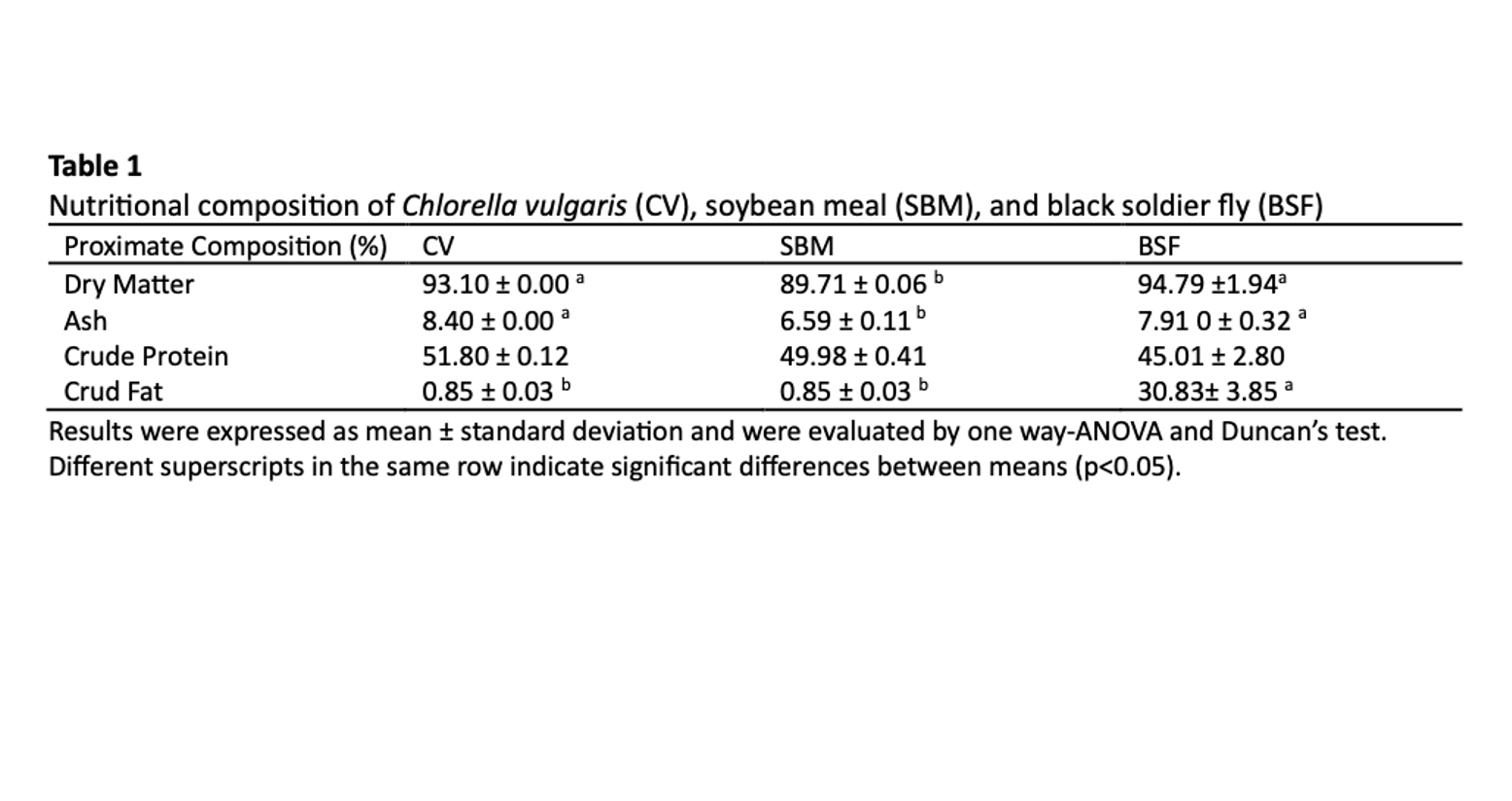Evaluating the Nutritional and Antioxidant Potential of Chlorella Vulgaris in Comparison to Conventional Feed Ingredients
Keywords:
In vitro fermentation, soybean meal, Chlorella vulgaris, black soldier fly (Hermetia illucens), antioxidant analysisAbstract
Chlorella vulgaris, a protein-rich unicellular microalgae, is increasingly recognized as a sustainable and functional alternative to conventional feed ingredients in ruminant diets. This study evaluated the proximate composition, antioxidant capacity, and in vitro digestibility of C. vulgaris (CV) compared to soybean meal (SBM) and black soldier fly (BSF). Proximate analysis was conducted to determine the nutritional profile, while antioxidant activity was assessed through the 2,2-diphenyl-1-picrylhydrazyl assay (DPPH), the ferric reducing ability of plasma assay (FRAP), and the total polyphenol content (TPC) assays. At similar crude protein level, both CV and BSF exhibited significantly (p<0.05) higher dry matter (DM), and ash content than SBM, whereas BSF yielded the highest crude fiber content (30.83%). Fermentation kinetic profile indicated that SBM and CV share the similar fermentation potential (a+b), in vitro organic matter digestibility (IVOMD), and acetate-to-propionate ratios, all significantly (p<0.05) higher than BSF. Yet, BSF exhibited higher volatile fatty acid (VFA) concentration (90.11mM) and the greatest fractional degradation rate (c=0.08 mL/h). Antioxidant assays demonstrated that CV possessed significantly (p<0.05) greater DPPH radical scavenging activity (81.86%), FRAP value (0.15 mg AAE/ml), and TPC (291.23 mg GAE/g) compared to SBM and BSF. Collectively, these findings highlight the strong nutritional value and antioxidant capacity of CV, supporting its potential as a partial substitute for conventional protein sources such as soybean meal in ruminant feeding strategies









